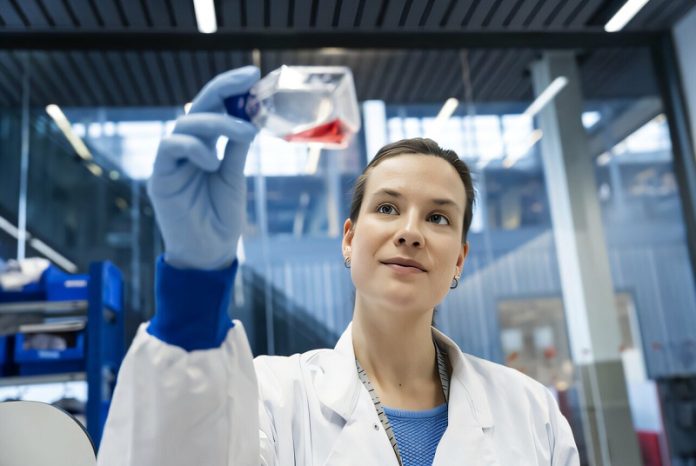
Every person is made up of billions of cells, the tiny building blocks of our bodies.
These cells work together to keep us alive, supported by a special gel-like material between them called the extracellular matrix (ECM). The ECM provides stability, helps cells communicate, and ensures they function properly.
However, when disease strikes, both the cells and the ECM can be damaged. Sometimes, the body cannot repair this damage, which can lead to loss of cell or organ function.
For her Ph.D., Maritza Rovers focused on finding a way to help cells recover by creating new scaffolds—structures that mimic the ECM and support cells.
These scaffolds might one day help repair damaged eye cells or even promote nerve growth in spinal cord injuries.
Maritza Rovers, a researcher in biomedical engineering, wanted to create scaffolds that act like the ECM to help damaged cells heal.
Unlike the metal scaffolds used in construction, her scaffolds are made from tiny molecules called monomers that come together to form networks. These networks create hydrogels, which are materials with a gel-like consistency that behave like the ECM.
But there was a challenge—most hydrogels are bulky and lack the fine structure of the natural ECM. To solve this, Rovers turned to microgels, much smaller building blocks that can be combined to create scaffolds with precise designs.
Rovers used a special technique called droplet-based microfluidics to make her microgels. In this process, tiny droplets of water are formed inside an oil layer, and these droplets eventually become gel-like microgels.
By adjusting the ingredients in the droplets—such as the concentration of building blocks and bioactive peptides—Rovers could create microgels with different properties, tailored for various purposes.
“These tiny microgels are like K’NEX toy blocks,” Rovers explained. “With the same set of blocks, you can build many designs. Similarly, we can use these microgels to create structures for different types of cells.”
One of Rovers’ main projects involved creating scaffolds to support eye cells, specifically the cells in the cornea’s thickest layer. By teaming up with her colleague Annika Vrehen, they encapsulated corneal cells in the microgels. Amazingly, these cells used the microgels to build their own tissue, organizing themselves and connecting with neighboring cells.
Rovers also developed scaffolds to support nerve cell growth after spinal cord injuries. Beyond helping human cells, she ventured into the world of plant cells—a much tougher challenge than expected.
“We thought growing plant cells would be easy since plants grow everywhere,” Rovers said. “But in the lab, plant cells turned out to be much more fragile than human cells.” Despite this, Rovers and her team found ways to grow plant cells using their microgel-based materials.
While her research led to exciting advancements, Rovers found that her personal growth was just as important. Early in her Ph.D., she was a perfectionist, planning every lab experiment in great detail. However, things often didn’t go as planned. “I learned to act and start experimenting instead of overthinking everything. When experiments fail, that’s when you get creative and find solutions.”
Rovers also realized the importance of letting go of things outside her control. “Perfectionism is good in research, but it shouldn’t dominate. I’ll keep reminding myself of this throughout my career.”
Rovers plans to stay with her research group for a short period before pursuing a postdoctoral position abroad. While securing funding and grants can be uncertain, she is optimistic about the future.
Her work on microgel scaffolds has opened new possibilities for healing human and plant cells. By continuing to explore the potential of these tiny building blocks, Rovers hopes to make a big difference in the world of science and medicine.
Source: KSR.



